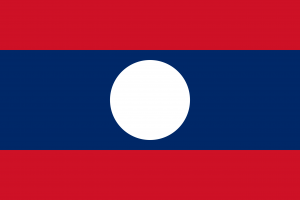Difference between revisions of "Language/Lao/Grammar/Past-Tense"
m (Quick edit) |
m (Quick edit) |
||
| Line 115: | Line 115: | ||
* [[Language/Lao/Grammar/Superlatives|Superlatives]] | * [[Language/Lao/Grammar/Superlatives|Superlatives]] | ||
* [[Language/Lao/Grammar/Conditional-Mood|Conditional Mood]] | * [[Language/Lao/Grammar/Conditional-Mood|Conditional Mood]] | ||
<span class='maj'></span> | |||
==Sources== | |||
* [https://en.wikipedia.org/wiki/Lao_grammar Lao grammar - Wikipedia] | |||
* [https://benjamins.com/catalog/aral.38.1.04rum The effectiveness of written corrective feedback and the impact Lao ...] | |||
{{Lao-Page-Bottom}} | {{Lao-Page-Bottom}} | ||
Revision as of 21:50, 2 April 2023
Introduction
In this lesson, you will learn how to form and use the past tense in Lao language. We will cover regular and irregular verbs, as well as cultural information and interesting facts to make the lesson more engaging and memorable.
Regular Verbs
Let's start with the basics: forming the past tense for regular verbs. In Lao, to form the past tense, you need to add the suffix "-ແລ້ວ" ("-leaw") to the end of the verb stem in the present tense.
For example:
| Lao | Pronunciation | English |
|---|---|---|
| ກົດ (kot) | [kɔ̄t] | to kick |
| ກົດແລ້ວ (kot-leaw) | [kɔ̄t.lɛ̄w] | kicked |
| ຍ້ອຍ (nyooy) | [ɲɔ̄ːj] | to swim |
| ຍ້ອຍແລ້ວ (nyooy-leaw) | [ɲɔ̄ːj.lɛ̄w] | swam |
As you can see, the verb stem remains the same, and we simply add "-ແລ້ວ" ("-leaw") to indicate that the action was completed in the past.
Here are some more examples of regular verbs in the past tense:
- ເມືອງ (mueng) - to live in a city or town: ເມືອງແລ້ວ (mueng-leaw) - lived in a city or town
- ເຄື່ອງ (kheung) - to eat: ເຄື່ອງແລ້ວ (kheung-leaw) - ate
- ຖືກ (thuek) - to fall: ຖືກແລ້ວ (thuek-leaw) - fell
Keep in mind that verb conjugation is different for each person and number in Lao. We will cover this in more detail later in the lesson.
Irregular Verbs
Now, let's move on to irregular verbs. These verbs do not follow the regular "-ແລ້ວ" ("-leaw") pattern, and instead have their own unique forms in the past tense.
Here are some common irregular verbs in Lao:
- ມີ (mi) - to have: ມີກ່ອນ (mi koi) - had
- ຊົ່ວບໍ່ (soua bo) - cannot: ບໍ່ໄດ້ແລ້ວ (bo dai leaw) - could not
- ສົມບູນ (som bun) - to want: ສົມບູນກ່ອນ (som bun koi) - wanted
There are many irregular verbs in Lao, and it is important to memorize their past tense forms in order to use them correctly in conversation.
Verb Conjugation
As mentioned earlier, verb conjugation in Lao is different for each person and number. Here is a brief overview of the different forms for regular verbs in the past tense:
| Person/Number | Conjugation Example |
|---|---|
| I/1st person singular | ຂ້ອຍ (khoy) + Verb + ແລ້ວ (leaw) - ຂ້ອຍ ເກົ້າແລ້ວ (khoy keaw leaw) - I kicked |
| You/2nd person singular | ທ່ານ (ta-nong) + Verb + ແລ້ວ (leaw) - ທ່ານ ເກົ້າແລ້ວ (ta-nong keaw leaw) - You kicked |
| He/She/It/3rd person singular | ມີ (mi) + Verb + ແລ້ວ (leaw) - ມີ ເກົ້າແລ້ວ (mi keaw leaw) - He/She/It kicked |
| We/1st person plural | ພວກເຮົາ (phou-khao-rai) + Verb + ແລ້ວ (leaw) - ພວກເຮົາ ເກົ້າແລ້ວ (phou-khao-rai keaw leaw) - We kicked |
| You/2nd person plural | ທ່ານທີ່ (ta-nong-thi) + Verb + ແລ້ວ (leaw) - ທ່ານທີ່ ເກົ້າແລ້ວ (ta-nong-thi keaw leaw) - You kicked |
| They/3rd person plural | ເຂົ້າ (khao) + Verb + ແລ້ວ (leaw) - ເຂົ້າ ເກົ້າແລ້ວ (khao keaw leaw) - They kicked |
Irregular verbs have different conjugation depending on the verb itself, just as in other languages. As we touched on earlier, there are many irregular verbs in Lao, so it is important to practice and memorize them in order to use them correctly in context.
Cultural Information
In Lao culture, the past tense is often used to show respect to elders or people of higher social status. For example, younger people may use the past tense when speaking to their parents, teachers, or monks as a sign of respect. This is similar to other languages like Japanese and Korean.
Additionally, in Lao, verbs can be used without a subject, as the subject can be implied from the context of the sentence. This is a common feature of many Southeast Asian languages, and can take some getting used to for second language learners.
Interesting Facts
Lao language has many dialects, with the largest being the Vientiane dialect, named after the capital city. However, the Lao People's Democratic Republic recognizes only one official dialect for writing and speaking, based on the standard dialect of Vientiane.
Lao language is closely related to Thai language, with many shared words and grammar structures. In fact, Lao and Thai are so similar that some people consider them to be dialects of the same language. However, there are also significant differences in pronunciation, vocabulary, and grammar that make them separate languages in their own right.
Conclusion
In this lesson, you learned how to form and use the past tense in Lao language, including regular and irregular verbs, as well as the basics of verb conjugation. Additionally, you gained insight into Lao culture and interesting facts about the language itself. Keep practicing and studying, and you'll be speaking Lao like a pro in no time!
Other Lessons
- Plurals
- Present Tense
- Pronouns
- Personal pronouns
- Question Words
- Give your Opinion
- Future Tense
- Comparatives
- Superlatives
- Conditional Mood
Sources
